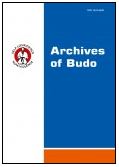2011, Volume 7, Issue 4
Stress urine incontinence especially in elite women athletes extremely practicing sports
Józef Opara1, Teresa Socha2, Mariola Bidzan3, Krzysztof Mehlich1, Anna Poświata1
1Department of Physiotherapy, Jerzy Kukuczka Academy of Physical Education, Katowice, Katowice, Poland
2Department of Physical Education, Jerzy Kukuczka Academy of Physical Education, Katowice, Katowice, Poland
3Faculty of Psychology, University of Gdańsk, Gdańsk, Gdańsk, Poland
Author for correspondence: Józef Opara; Department of Physiotherapy, Jerzy Kukuczka Academy of Physical Education, Katowice, Katowice, Poland; email: jozefopara[at]wp.pl
Full text
Abstract
Urinary incontinence according to the International Consultation on Incontinence – ICI, is objectively established involuntary urine flow causing hygiene problems in society because it relates to more than 5% of the population. Urinary incontinence is often hidden from family and the doctor. It is estimated that about 2 / 3 of all cases of urinary incontinence is kept secret because of shame and embarrassment, and insufficient information about treatment options. This ailment is twice more likely in women than in men, and its frequency increases with age. Urinary incontinence is defined as a condition in which the , independent urine flow will result in social and / or hygiene problems.There are relatively few reports on stress urinary incontinence in female athletes. Stress Urinary Incontinence occurs in about 25-30% of young athletes. It is particularly noticeable in certain sports such as gymnastics, basketball, jumping and running (i.e. track and field events); less commonly implicated sports include skiing, tennis and skating. Risk factors for exercise-induced Stress Urinary Incontinence are: female gender, hypoestrogenic amenorrhea, involvement in high-impact sports activity, heavy exertion and child bearing.In this review paper a some basic knowledge on Stress Urinary Incontinence in women extremely practicing sports, relating to epidemiology, etiopathogenesis, diagnostic procedures, treatment and prevention is described.
Key words: athletes, epidemiology, female athletes, stress urinary incontinence , urinary incontinence




